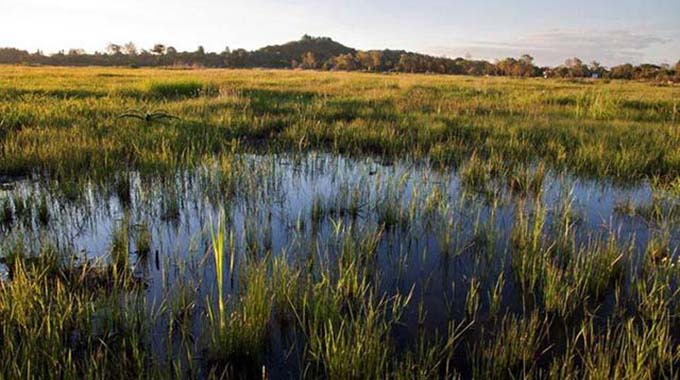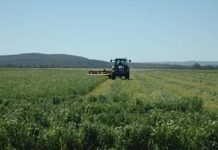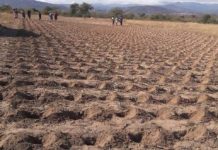Most environmental challenges occur due to bad rapport between humans and their environment. Environment refers to all natural and man-made resources found in the lithosphere and atmosphere-water, soil, minerals and living organisms (Environmental Management Act, 20:27).
The triangulation of the environment, economy and society enhances human survival. I have heard conversations around the argument that Harare is located on wetlands.
If I were to conduct an environmental scan, the GPS coordinates will lead me to areas like Kuwadzana, Dzivarasekwa, Budiriro, Mebelreign, Madokero, Bluffhill, Waterfalls, Tynwald, Borrowdale West, Ballantyne Development, Monavale to mention, but a few.
Agreed, Harare is not Zimbabwe.
However, all major urban expansion activities are more pronounced in the capital city when compared to other cities and municipalities like Kwekwe, Mutare, Marondera and Gwanda.
This is the face of the country, where all visitors and dignitaries use to gauge the country’s political, social, economic and environmental performance.
Chitungwiza has refused to be outdone by Harare. One cannot be faulted for arguing that, if anything, most developments witnessed in Chitungwiza have been predominantly on wetlands.
If you look at Seke’s Units N, O, P, J, L, K, G, Zengeza 4 (especially paGomba), St Mary’s and Manyame, one is tempted to conclude that they are all sited on wetlands.
In Gweru, you have Mutapa and Ascot among other areas.
The writing is inspired by a theory of sustainable development known as “Egg of Sustainability Model”.
The model was designed by International Union for the Conservation of Nature (IUCN) in 1994 to illustrate the relationship between people and the ecosystem as one circle inside another, like an egg.
It shows the interdependency between people and the environment like the egg setup, where the yolk represents the people and the white represents the ecosystem.
It uses an equation where sustainable development = human wellbeing + ecosystem wellbeing.
People need the environment more than vice versa. The environment can survive in its natural form without human beings, and wait for natural processes to occur.
But a human being cannot survive without the environment.
However, the human being is in an overdrive to destroy the environment through urban expansion. Anthropogenic climate change is posing enormous challenges to the environment.
Researches have proven that there is new and stronger evidence that most of the warming observed over the last 50 years is likely to be attributable to human activities.
The Environmental Management Agency (EMA) is our environmental watchdog. I presume they have a wetlands map for the whole country. The observation of the same is a different animal altogether.
Before any development project takes place in Zimbabwe, it is a statutory requirement to carry out an Environmental Impact Assessment (EIA).
The Environmental Management Act makes it mandatory to do an EIA on prescribed projects, like urban expansion, mining or dam construction, which is approved by EMA.
However, EMA, for an environmental layman like me, appears to be a toothless bulldog.
They seem to be expending their energies on fining offenders of the environment such as illegal sand miners where they often play hide and seek and local authorities for pollution.
There is little evidence to prove that EMA has successfully stopped any development project on wetlands.
What we have witnessed is suspension of the project, “till the EIA is done” and the project resumes soon after that.
The Longchen Plaza is a typical example, where at one time, we read in the print media that there was friction between EMA and the company that built the Plaza.
The issue was later “resolved” and the project proceeded.
In Chitungwiza, a big funeral assurance company, that appears to be the champions of the environmental protection, built a parlour right on the stream banks.
My obvious assumption is that the EIA was done and EMA gave the node.
But at what stage will EMA say “NO”.
A number of fuel stations are sited right on the stream banks across town, and this means all spillages will trickle into the streams and contaminate the water bodies that feed into Lake Chivero, which supplies water to Greater Harare.
Local environmentalists have accused Government and local authorities for being the greatest perpetrators of wetlands destruction.
They are the biggest violators of environmental management. The accusation stems from the kind of urban expansion projects implemented by both central Government and local government on wetlands.
The two authorities have allocated land for housing development on wetlands, and in worst cases, beneficiaries have had to use special foundations for their superstructures. Harare is affected by water shortages, and the stand owners drill boreholes.
Where is EMA when all these developments are happening? Is it a sign that Government departments are working in silos? The endgame of such compartmentalised development is water shortages, habitat destruction and loss of biodiversity.
There is need to conserve the flora and fauna through various conservation techniques. Man-made destruction of the biodiversity is avoidable.
Scholars like Zvomuya (2017) argue that deliberate efforts should be enhanced to protect the natural systems that support life on earth, maybe through encouraging consumption within the bounds of the ecology.
In other words, Government should be able to minimise the adverse effects of human activities that negatively impact on natural resources, in particular destruction of our wetlands through urban expansion related activities such as housing development.






